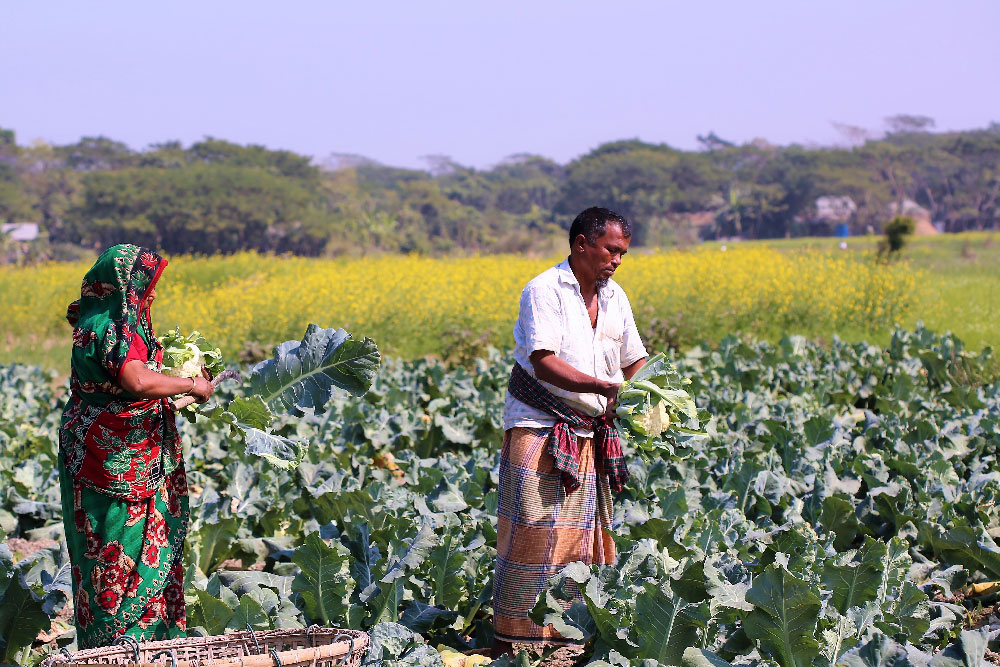
WATSAN Project
(Promoting Community Based Water, Sanitation and Hygiene Practice in the Rural Area of Shariatpur)
Project Objective: The main objective of the project is to increase accessibility of water, sanitation and proper hygiene practice to the poor and marginalized people of Shariatpur district (Bangladesh) by 2014.
Project Goal: To improve the public health situation, with the intent of reducing mortality rate of women and children in rural Bangladesh.
Donor Name: MAX Foundation.The Netherlands.
Project Duration: 15 Feb 2012 – 14 Feb 2015
Project Target Group: Destitute people in the rural areas especially women and children
Project Working Area:
District Name: Shariatpur.
Upazila: Shariatpur Sadar & Bhedarganj.
Union Name:
Shariatpur Sadar: 1. Chitolia Union 2. Mahamudpur Union.
Bhedarganj: 1. Khachikata 2. Uttar Tarabunia 3. DakhinTarabunia 4. Charsensus 5. Arshinagor
Country profile and project background: The geographic location of Bangladesh made it the sub-continents’ most vulnerable to climate change, as a result the country faces increasing environmental degradation and extreme weather events.Bangladesh lies between latitudes 20° and 26°North and longitudes 88°and93°Eastand is mostly comprised of the low-lying delta formed by the confluence of Ganges and Brahmaputrahttp://en.wikipedia.org/wiki/Brahmaputra Rivers (Agrawala S et al., 2003). Due to high population density of 1142 people per square kilometers (World Bank, 2012), high exposures of climatic hazards and poverty, the country has been facing many challenges since its independence in 1971; among which, rural socioeconomic development remain as the greatest challenge. Over the past few decades,mortality and morbidity of the children under the age of five has reduced tremendously, but even today 56 of the every 1000 child born dies unnatural death (World Bank, 2010). The country also has a long way to go regarding neonatal and antenatal care for the mothers.
Access to potable water, proper sanitation and hygiene practices are some of the fundamental human need and inadequate provision of these needs are closely related to many communal diseases (such as diarrhea, cholera, malaria etc.), health risks and environment pollution. The cause of the deaths of the children under the age of five has been largely credited globally to the lack of safe water, sanitary latrines at household levels and hygienic practices. Since the birth of this country, Government and Non-Government organizations (NGO’s) have undertaken extensive projects in order to ensure safe water for everyone. However, in early 90’s when the government was about to declare the safe water coverage, the detection of arsenic came out like a silent killer. The increased frequency and intensity of naturally occurring disasters, high population density, low socioeconomic status and lowered groundwater level due to climate change has aggravated the situation of lacking access to clean water.
Despite the sharp decline in mortality rate of infants and children, every yeararound140 thousand children, under the age of five die an unnatural death caused by diarrhea and other waterborne diseases (UNICEF, 2011) and the surviving children suffer 3 to 5 episodes of diarrhea each year.
Project overview:(drop down here)
Human Resource: Project Coordinator-1, Training Officer-1, Community Mobilizer- 7, Accountant-1, Support Staff- 1
Project Activity: Major activities include but are not confined to:
- Baseline Survey
- Formation of village WATSAN committee
- Formation of volunteer group
- Courtyard Awareness session by flipchart
Hardware support:
|
Access to safe drinking water for poor people at the community level |
Hygiene Latrine to poorest HHsat the community level |
|
|
|
Deep tube well set up |
Hygienic latrine support |
Latrine support with water point |
|
|
Maintenance equipment |
Superstructure will contribute by the HHs |
Only water point supply (DTW) |
|
|
Arsenic test & Demarcation |
|
|
|
|
Care taker selection & define responsibilities. |
|
|
Training/orientation/Workshop:
- Arsenic & Hygiene promotion to VWC
- Leadership &WATSAN management to VWC
- TBA training & kit box support
- Campaign:
-
- Rally
- Miking
- Folk show
- Day observation
- Poster pasting/dissemination
Staff Training/orientation/workshop & ICE/BCC material:
- Staff orientation on project briefing
- TOT on CLTS
- Learning sharing experiences
- Program management & review meeting
- ICE/BCC materials:
-
- Development of training module
- Development of flipchart
- Poster development
Project Budget: 25207046 TK Expected outcome:
1.1 Community awareness raised on the use of safe water, sanitation, personal hygiene to bring positive changes in the behaviour of the community people that falls within the range of project areas.
1.2 Community demand created for safe drinking water and hygienic sanitation facilities.
1.3 Appropriate IEC/BCC materials developed and distributed among the target groupsfor increasing awareness.
2.1 Community awareness raised about arsenic related health hazards and testing facilities for arsenic will be provided.
2.2 Sustainable safe water options provided in the exposed population that falls within the range of the project area.
2.3 Set up low cost sanitation production centres in different convenient locations and ensure sanitation facilities for the underprivileged peoples.
3.1 Capacity of the staff of SDS enhanced for the effective implementation of the project and for advocacy with the government and non-government agencies.
3.2 Advocacy initiatives undertaken with relevant government and non-government agencies.
